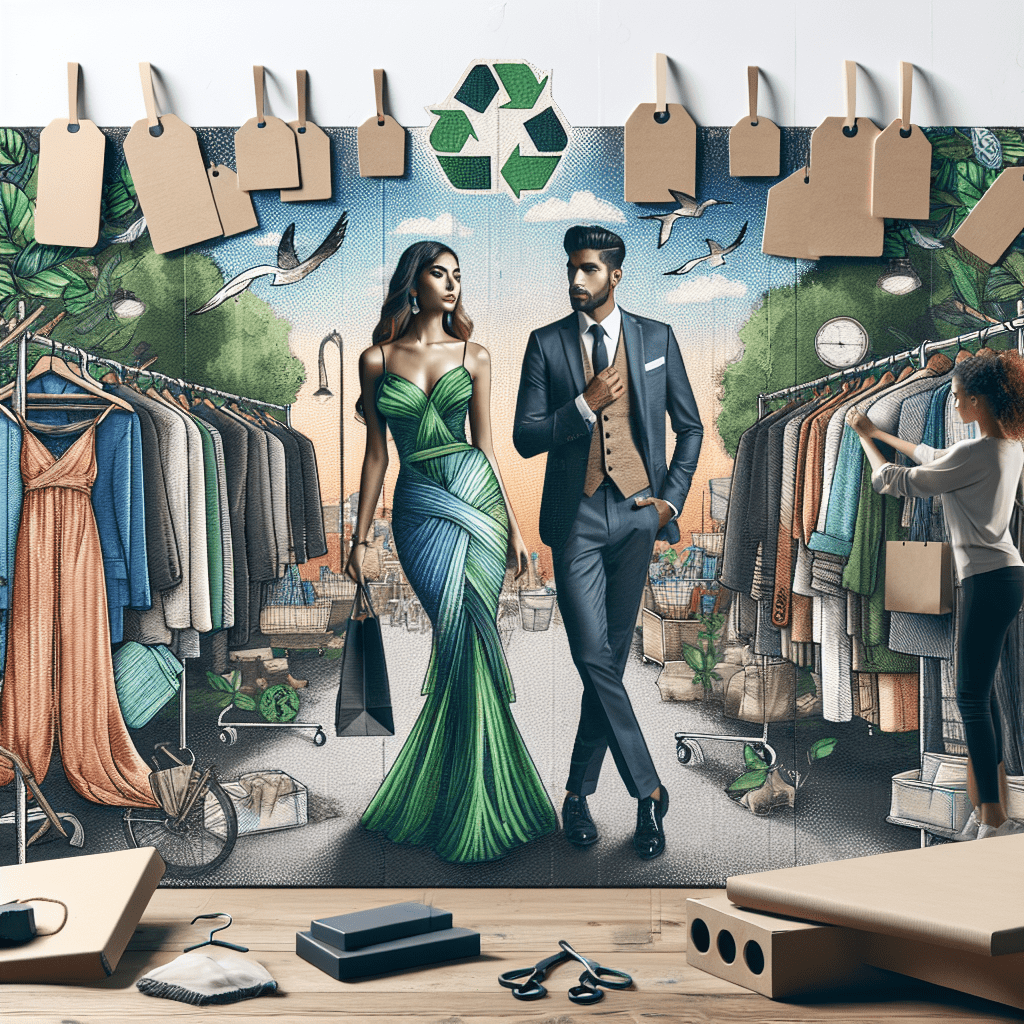In recent years, there has been a significant shift in the fashion industry towards sustainable and eco-friendly practices. With increasing awareness about the environmental impact of fast fashion, consumers are now more inclined towards supporting brands that prioritize sustainability. This has led to the rise of sustainable fashion, which focuses on creating clothing and accessories in a way that minimizes harm to the environment and prioritizes ethical practices. Let’s delve into the world of sustainable fashion and explore the latest eco-friendly style trends.
1. Sustainable Materials
One of the key pillars of sustainable fashion is the use of eco-friendly materials. Traditional fashion production relies heavily on materials like cotton and polyester, which have a significant environmental impact due to the high water and chemical usage. Sustainable fashion brands are now turning towards alternative materials like organic cotton, bamboo, hemp, and recycled fabrics. These materials are not only better for the environment but also offer unique textures and styles for fashion-forward consumers.
2. Ethical Production
In addition to using sustainable materials, ethical production practices are also a key component of sustainable fashion. This involves ensuring that garments are produced in safe working conditions, with fair wages and treatment for workers. Many sustainable fashion brands prioritize transparency in their supply chain to ensure that consumers can trace the origins of their clothing and understand the production process. By supporting brands that prioritize ethical production, consumers can make a positive impact on the lives of garment workers around the world.
3. Circular Fashion
Circular fashion is a concept that focuses on creating a closed-loop system for clothing production, where garments are designed to be reused, recycled, or upcycled at the end of their lifecycle. This eliminates waste and reduces the environmental impact of fashion production. Many sustainable fashion brands are embracing circular fashion principles by designing durable and timeless pieces that can be worn for years to come. By investing in high-quality clothing that is designed to last, consumers can reduce their fashion footprint and support a more sustainable industry.
4. Slow Fashion
Slow fashion is another emerging trend in sustainable fashion, which emphasizes quality over quantity and encourages consumers to buy less and choose well. This contrasts with the fast fashion model, where trends change rapidly, and clothing is produced quickly and cheaply. Slow fashion brands focus on creating timeless pieces that are made to last, encouraging consumers to invest in wardrobe staples that will stand the test of time. By adopting a slow fashion mindset, consumers can reduce their environmental impact and support a more sustainable approach to clothing consumption.
5. Eco-Friendly Design
Design plays a crucial role in sustainable fashion, as innovative designers are incorporating eco-friendly elements into their collections. This can include using natural dyes, zero-waste patterns, and innovative construction techniques that minimize waste and maximize sustainability. Sustainable fashion brands are also experimenting with innovative design approaches like modular clothing, where garments can be customized and modified to create new styles. By prioritizing eco-friendly design, fashion brands can create visually stunning collections that also leave a positive impact on the environment.
Conclusion
The rise of sustainable fashion represents a shift towards a more conscious and responsible approach to clothing production. With growing awareness about the environmental and social impact of fast fashion, consumers are now seeking out brands that prioritize sustainability and ethical practices. By supporting sustainable fashion brands and embracing eco-friendly style trends, consumers can make a positive impact on the planet and contribute to a more sustainable future for the fashion industry.
FAQs
Q: Where can I find sustainable fashion brands?
A: Many sustainable fashion brands can be found online, or in select stores that specialize in eco-friendly and ethical clothing. Look for brands that prioritize transparency in their production process and use sustainable materials in their collections.
Q: Is sustainable fashion more expensive than traditional fashion?
A: Sustainable fashion can sometimes be more expensive than traditional fashion due to the use of eco-friendly materials and ethical production practices. However, investing in high-quality sustainable clothing can ultimately save money in the long run, as these pieces are designed to last longer and withstand trends.
TIP: When shopping for sustainable fashion, look for certifications like GOTS (Global Organic Textile Standard) and Fair Trade to ensure that the brand meets strict environmental and ethical standards.
#Rise #Sustainable #Fashion #EcoFriendly #Style #Trends

